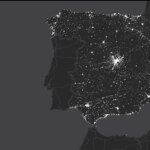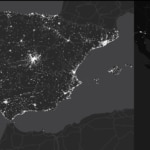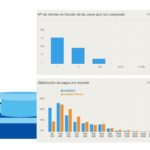The combination of data from financial operations and advanced machine learning techniques allows BBVA to identify patterns and design tools that offer increasingly personalized and intelligent products and services.

In 2006, when LinkedIn was still a startup with just eight million users (today it has more than 500 million), a small but revolutionary idea changed the course of the company. The idea was to introduce big data algorithms to suggest new connections to users through the button “people you may know” (PYMK).
This new function led to millions of new visits and increased the number of clicks on new pages by 30%. Not long after, this idea was copied by other companies like Facebook and Yelp. It marked a milestone in the change toward a business model that uses data to offer users more and better services. “Data-driven companies base their decisions on artificial intelligence algorithms for enormous volumes of data – not on intuition,” said Elena Alfaro, the Head of BBVA Data and Open Innovation, at an event with analysts at Ciudad BBVA.
Alfaro explained how data allow these companies to automate processes and offer increasingly personalized services. For example, Amazon increased its sales by 30% when it added the button “other people also purchased these products.” On Netflix, 85% of the content that viewers watch is based on recommendations, not searches. However, not all data are created equal. “Algorithms have been around for a long time, but they often don’t work. What makes the difference is having the right data and a strong calculation. That’s when the magic of artificial intelligence happens,” she added.
From desire to action
The data that BBVA has available is not the same data that powers some of the intelligent engines at companies like Facebook. While the “likes” from Zuckerberg’s company show users’ intentions, the data BBVA Data & Analytics uses shows evidence of their actual financial actions, distributed over time and space, using data from credit card transactions. This changes the paradigm completely.
When studying these actions, data scientists can create different profiles based on users’ behavior. They observe how these profiles evolve over time and use this information to create patterns that make it possible to predict the future and make customers personalized recommendations to help them better understand and manage their finances.

The image shows millions of anonymous credit card transactions in Spain and Mexico.
How this information is used
Along these lines, two images enable the visualization of the information that can be obtained from studying credit card transactions. On the left, the white dots represent the 710 million card transactions carried out by 53 million people in Spain. They add up to a total of €43 billion. On the right, the other image shows Mexico, on the other side of the Atlantic. Here, the white dots represent the 88 million people carrying out 1.5 billion credit card transactions in 1.1 million establishments in the country. They add up to a total of €41 billion.
“By combining internal information with external data and applying different levels of ‘zoom’ and data aggregation, we can see things that were previously invisible and create value,” explains Alfaro. BBVA uses the data in combination with advanced machine learning techniques in two ways: externally, to personalize user experience, scale up services and create relevance for users; and internally, where data serve to automate services, improve efficiency and enhance decision-making.

Elena Alfaro, Head of BBVA Data and Open Innovation.
For decision-making
An example of the latter is the RedeX program developed by BBVA Data & Analytics. It uses different types of data –from bank transfers, official bulletins and operations with other institutions– to improve the risk assessment process for new and current customers’ credit applications. The project recently received The Banker magazine’s Technology Project of the Year award in the Risk Management category.
In addition, BBVA is the first bank to Spain to offer customers a digital financial assessment based on big data. BBVA has a function called BBVA Bconomy, which allows customers to find out about their financial health and access personalized plans to improve it. The tool measures the evolution of income and expenses, savings, housing expenses and debt to rate the customer’s financial health. It also uses external data to offer customers a socio-demographic comparison with other people around them with similar characteristics.
Another practical application of this data is Commerce360, a big data tool for businesses currently available in Mexico and Spain. It converts data from card transactions into commercial intelligence, which can create a decisive competitive advantage. “Given the vast amount of data we have available, we saw that it was possible to use this information from transactions to help small businesses become more familiar with what their competitors are doing in the same geographic context,” explains the Head of Data & Analytics.

Commerce360 gives retailers access to a set of statistical indicators describing their businesses, their customers and the area in which they operates.
Data as a service
Both Netflix and Amazon are continually creating data-based products whose characteristics are determined by studying information about users. Their preferences and habits are what shape the next service in such a way that the likelihood of success is much greater. Users also get used to the fact that products they use “know” them and meet their expectations.
This philosophy is now applicable on a new level, thanks to the use of financial data through APIs. In its API Market, BBVA offers third parties access to anonymous, aggregated data from eight different categories of financial operations to create new, personalized products and services. The initiative (currently operational in the United States and Spain), is also the result of BBVA Data & Analytics data scientists’ work. It makes data about customers, cards, notifications, accounts, payments and loans available to third parties (with their prior consent).
Data for good
Knowing how many people conduct financial transactions, where and when, is highly valuable information that goes beyond the strictly corporate context. After all, financial activity represents the movement of people over time and space and is an expression of the evolution of their relationship with banks, businesses and other people in a certain geographic context.
Through a joint project with UN Global Pulse, BBVA Data & Analytics studied how data can be used to analyze a population’s capacity for economic recovery after a natural disaster. The project studied the impact of Hurricane Odile in Baja California Sur in 2016 and revealed that people spent 50% more than usual on products like food and gasoline in preparation for the hurricane. The study also demonstrated that women spent twice as much as men two days before the hurricane made landfall.